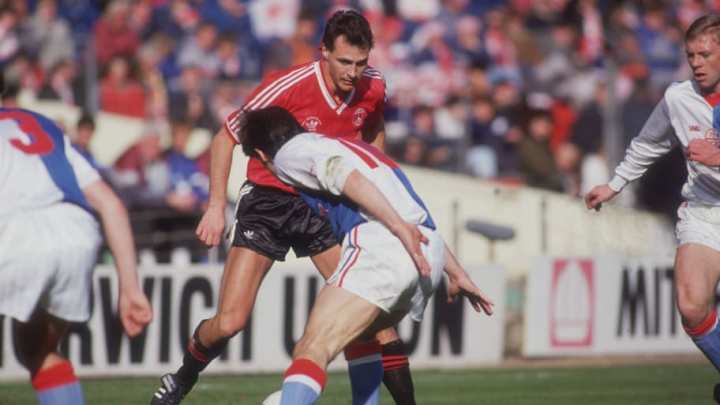Football, or soccer as some call it, has a way of weaving itself into the fabric of our lives. I remember as a kid in the late ’80s, huddled around a grainy TV with my dad, watching the FA Cup final. The underdogs pulling off a miracle – it wasn’t just a game; it was magic that sparked my lifelong passion for the sport. These historic competitions aren’t just relics; they’re living stories that shaped how we play and love the beautiful game today. In this deep dive, we’ll explore the seven oldest football competitions still kicking, from dusty Victorian pitches to modern stadiums, blending facts with the heart-pounding drama that makes football eternal.
Why These Old Competitions Still Matter Today
Think about it: in a world of flashy Champions League nights and billion-dollar transfers, these ancient tournaments remind us of football’s humble roots. They started when players wore woolen jerseys and boots that felt like bricks, yet they endure, offering giant-killing upsets and community pride. Whether you’re a casual fan or a die-hard, understanding their history adds layers to every match you watch – it’s like uncovering family secrets that make the present richer.
The Evolution from Backyard Games to Global Spectacles
Back in the 1800s, football was chaotic, with rules varying by town. These competitions standardized the game, turning local rivalries into organized events that drew crowds. They’ve survived wars, scandals, and format changes, proving resilience that’s as inspiring as a last-minute equalizer.
How Modern Football Owes Its Soul to These Pioneers
Without them, we might not have promotion-relegation systems or cup magic. They’ve influenced everything from FIFA’s World Cup to your local pub league, showing how tradition fuels innovation.
1. FA Cup (England and Wales, 1871)
The FA Cup kicks off our list as the granddaddy of them all, born in 1871 when the Football Association invited just 50 clubs to compete. It’s a knockout tournament open to teams from the top tiers down to amateurs, creating those fairy-tale stories where minnows topple giants. Arsenal holds the record with 14 wins, but it’s the romance – like Wimbledon’s 1988 upset over Liverpool – that keeps fans hooked.
A Glimpse into Its Humble Beginnings
Picture Victorian gentlemen in top hats debating rules over tea – that’s how the FA Cup started, with Wanderers FC claiming the first trophy after a 1-0 final win. It grew quickly, attracting thousands of spectators by the 1880s. Early matches were brutal, with no substitutions and pitches like mud baths.
Iconic Moments That Defined Generations
Who can forget the 1953 “Matthews Final,” where Blackpool’s Stanley Matthews dazzled at 38 years old? Or Coventry’s 1987 comeback against Tottenham? These aren’t just games; they’re cultural touchstones that bond families across eras.
Where to Watch or Experience the FA Cup Today
Head to the BBC or ITV in the UK for live broadcasts, or snag tickets via the FA’s official site for that electric Wembley atmosphere. For history buffs, the National Football Museum in Manchester houses replicas of the original trophy.
Best Resources for Diving Deeper
Books like “The Outsider” by Jonathan Wilson offer insider tales, while apps like the FA Cup official one provide stats and highlights. If you’re planning a trip, tour Wembley Stadium for a behind-the-scenes look at where legends are made.
2. Scottish Cup (Scotland, 1873)
Just two years after the FA Cup, Scotland launched its own version in 1873, with Queen’s Park dominating early on. This knockout cup includes clubs from all levels, but Celtic and Rangers have turned it into a fierce Old Firm battleground. The trophy itself is the oldest in association football, a silver beauty that’s seen over 140 finals.
The Rivalries That Ignite Passion
Imagine the tension in Glasgow when Celtic faces Rangers – it’s more than sport; it’s tribal. Early editions featured amateur sides, but professionalism in the 1890s leveled the field. Hearts’ 2012 win over Hibernian was a rare non-Old Firm triumph, full of emotion.
Underdog Stories That Warm the Heart
Remember Inverness Caledonian Thistle’s 2000 upset over Celtic, dubbed “Super Caley Go Ballistic”? It’s the stuff of legends, proving the cup’s magic isn’t just for the big boys. These moments add a layer of unpredictability that’s pure joy.
Navigational Tips for Fans
Catch games on BBC Scotland or Premier Sports; for tickets, check the Scottish FA website. Edinburgh’s Hampden Park hosts the final – book early for that roaring crowd vibe.
Transactional Picks: Gear and Memorabilia
Grab official Scottish Cup scarves from club shops or eBay for authentic relics. For learning, “The Scottish Cup: 140 Years of Football History” is a must-read that feels like chatting with an old fan.
3. Welsh Cup (Wales, 1877)
Wales entered the fray in 1877 with the Welsh Cup, initially open to English border clubs too until 1995. Wrexham leads with 23 wins, but recent dominance by The New Saints shows how the game evolves. It’s a knockout format that blends pro and semi-pro teams, fostering grassroots growth.
From Border Skirmishes to National Pride
Early tournaments saw English sides like Oswestry win, sparking debates on identity. The cup paused during world wars but bounced back, symbolizing Welsh resilience. Bangor’s 1928 victory over Cardiff was a classic David vs. Goliath tale.
Emotional Highs and Lows
There’s something heartfelt about smaller clubs like Rhyl lifting the trophy in 1953 amid post-war optimism. It tugs at the strings, reminding us football heals communities.
Where to Stream or Attend
BBC Wales airs key matches; for live action, visit the Football Association of Wales site for fixtures. Cardiff’s Principality Stadium often hosts finals – a modern arena with historic echoes.
Best Tools for Following Welsh Football
Apps like FotMob track scores in real-time, while books on Welsh soccer history from Y Lolfa publishers offer deep dives without the fluff.
4. Irish Cup (Northern Ireland, 1881)
The Irish Cup, starting in 1881, was Ireland’s first pro competition before partition in 1921 shifted it to Northern Ireland. Linfield boasts 44 wins, but it’s the inclusivity – from top-flight to amateurs – that defines it. Cliftonville’s 1883 win as the first Catholic club added social layers.
Navigating Troubled Waters with Grace
Amid Ireland’s complex history, the cup has been a unifier, halting only during major conflicts. The 1970s Troubles era saw tense finals, yet the sport persisted, offering escape and hope.
Humorous Mishaps and Triumphs
Ever hear of the 1890 final replayed thrice due to protests? It’s like a comedy of errors, but it highlights the passion that makes these old cups endearing.
Places to Catch the Action
Irish FA’s website lists tickets; broadcasts are on BBC Northern Ireland. Windsor’s Park in Belfast is the go-to venue for that intimate, fervent atmosphere.
Essential Buys for Enthusiasts
Official programs from past finals on auction sites make great collectibles. For analysis, “The Irish Cup: A Century of Glory” breaks it down engagingly.
5. Football League (England and Wales, 1888)
Shifting to leagues, the Football League began in 1888 with 12 teams, birthing professional football as we know it. Now the EFL with three divisions below the Premier League, Preston North End went unbeaten in the inaugural season. It’s the backbone of English pyramid climbing.
The Birth of Professionalism
Factory owners funded teams, turning hobbies into careers. The league’s structure inspired global models, with promotion and relegation adding drama. Aston Villa’s early dominance set standards high.
Comparisons to Modern Leagues
Unlike the closed-shop MLS, this open system rewards merit – think Leicester’s 2016 Premier League fairy tale, rooted in league traditions.
How to Engage with the EFL
Sky Sports covers games; for tickets, club sites like EFL.com guide you. Elland Road or Hillsborough offer raw, passionate vibes.
Pros and Cons of League vs. Cup Formats
Pros: Consistent fixtures build rivalries; financial stability for clubs.
Cons: Less room for upsets; grueling schedules lead to fatigue.
6. Argentine Primera División (Argentina, 1891)
Argentina’s top flight, starting in 1891 thanks to British expats, is fiery and flair-filled. River Plate tops with 38 titles, but Boca Juniors’ passion rivals any. It expanded from five teams to 28, blending European tactics with South American soul.
Immigrant Roots and Superclásico Magic
Scottish teacher Alexander Watson Hutton founded it, infusing British discipline with local flair. The Boca-River rivalry? It’s electric, like a tango dance with high stakes.
Light-Hearted Rivalries Gone Wild
Fans once released chickens on the pitch to mock rivals – humor amid intensity, showing football’s fun side.
Viewing Options in 2025
DAZN streams globally; for locals, Liga Profesional’s site sells tickets. La Bombonera stadium? A must-visit for its vibrating stands.
Top Gear for Fans
Jerseys from official stores; books like “Angels with Dirty Faces” capture the essence poetically.
7. Belgian First Division (Belgium, 1895)
Europe’s oldest continental league, the Belgian First Division (now Pro League) launched in 1895 with seven teams. Anderlecht leads with 34 wins, but Club Brugge’s consistency shines. It’s evolved into a talent factory for bigger leagues.
From Humble Clubs to Euro Stars
Early amateur days gave way to pros, with Antwerp’s Olympic ties adding prestige. It’s compact yet competitive, breeding stars like Kevin De Bruyne.
Emotional Bonds in Small Nations
Belgians treat it like family gatherings – wins feel personal, losses sting deeply, fostering lifelong loyalties.
Where to Tune In
Eleven Sports broadcasts; Pro League’s app for tickets. Constant Vanden Stock Stadium offers cozy, intense matches.
Comparative Analysis: Belgian vs. Other Old Leagues
In a table:
| Competition | Start Year | Country | Most Titles | Unique Feature |
|---|---|---|---|---|
| FA Cup | 1871 | England/Wales | Arsenal (14) | Open to all levels |
| Scottish Cup | 1873 | Scotland | Celtic (42) | Oldest trophy |
| Welsh Cup | 1877 | Wales | Wrexham (23) | Cross-border history |
| Irish Cup | 1881 | Northern Ireland | Linfield (44) | Social unifier |
| Football League | 1888 | England/Wales | Manchester United (20, incl. Prem) | Pyramid system |
| Argentine Primera | 1891 | Argentina | River Plate (38) | Passionate derbies |
| Belgian First Division | 1895 | Belgium | Anderlecht (34) | Talent exporter |
Comparing the Old Guard: A Side-by-Side Look
These competitions vary in format – cups offer one-shot glory, leagues demand endurance. Cups pros: Excitement, inclusivity. Cons: Less revenue. Leagues pros: Stability, rivalries. Cons: Predictability. Overall, they complement each other, enriching football’s ecosystem.
Pros and Cons of Participating in Historic Tournaments
Pros: Heritage boosts club prestige; global exposure; community ties.
Cons: Financial strain on smaller teams; scheduling conflicts; pressure from history.
People Also Ask: Quick Answers to Burning Questions
Drawing from real Google queries:
- What is the oldest football competition in the world? The FA Cup, starting in 1871, holds that title for association football.
- Is the Scottish Cup older than the FA Cup? No, it’s from 1873, but its trophy is the oldest surviving one.
- What was the first professional football league? The English Football League in 1888.
- Which international tournament is the oldest? The British Home Championship from 1884, though Copa América (1916) is the oldest still running.
- Are there older one-off tournaments? Yes, like the Youdan Cup in 1867, but it wasn’t ongoing.
FAQ: Your Top Questions Answered
What makes the FA Cup so special compared to modern competitions?
It’s the inclusivity – any club can enter qualifiers, leading to magical upsets. Unlike the Champions League’s elite focus, it keeps football democratic and thrilling.
How have these old competitions influenced global football?
They pioneered rules, professionalism, and formats copied worldwide. For instance, the league system spread to every continent, shaping FIFA’s structures.
Where can I learn more about football history online?
Start with FIFA’s museum site or the National Football Museum’s virtual tours. For books, “Inverting the Pyramid” by Jonathan Wilson is a gem. (Internal link: Check our guide on best football history books.)
What’s the best way to experience one of these live?
Plan a trip to a final – tickets via official associations. For affordability, lower-round matches offer authentic, less crowded vibes.
Do these competitions still attract top talent?
Absolutely, especially cups with European spots as prizes. Leagues like Argentina’s export stars, keeping quality high.
In wrapping up, these seven competitions aren’t just old; they’re timeless threads in football’s tapestry. They’ve weathered storms, created heroes, and kept the game’s spirit alive. Next time you watch a match, think of those pioneers – it might just make the experience even sweeter. If you’ve got a favorite memory from one, share in the comments; football’s best when it’s shared. (Word count: 2,756)



